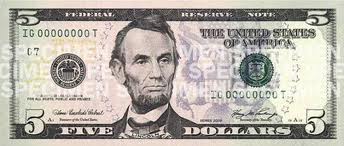 Tying HIV prevention to sexual identity has been an effective public health strategy. However, HIV infection among young Latino/a and African Americans continues to mount. "On the down low," a youth term for secretive or undercover, has become a code for the furtive same-sex sexual practices of young men who reject Gay or bisexual identities. This phenomenon received the attention of African Americans but Latino communities have largely, ignored it.
Tying HIV prevention to sexual identity has been an effective public health strategy. However, HIV infection among young Latino/a and African Americans continues to mount. "On the down low," a youth term for secretive or undercover, has become a code for the furtive same-sex sexual practices of young men who reject Gay or bisexual identities. This phenomenon received the attention of African Americans but Latino communities have largely, ignored it.The articles on the down low published in the popular press describe young men unfazed by the tension between their non-normative sexualities and their otherwise conventional Black and Latino working-class male identities. At the core of their secrecy, is their refusal to politicize their intimacy, that is, to adopt a public gay identity.2 While the literature on same-sex practices among African Americans lists religion as a paramount deterrent of sexual expression, men on the down low do not cite choosing between right and wrong as a dilemma. Like the broad smile of our "handsome Latino" in the South Bronx club suggests, the young men quoted in these articles do not seem to experience guilt for rejecting Judeo-Christian strictures. Their quandary is not ethical but socio-cultural. They would not flout age-, race-, and class-sanctioned masculinities: gay is not an option.
 The initial reports focused on youth, linking life on the down low to Hip-Hop culture's hyper-masculine stance (Trebay, 2000; Venable, 2001; Wright, 2001). The connection of the term down low with youth of color was consistent with linguistic assessments that place it emerging in the early 1990s among young African Americans (Green, 1998). Thus defined, the notion of the down low, although charged with moral and racial implications, is useful in public health terms because it delineates the sexual identity and behavior of a population, at a specific historical moment.
The initial reports focused on youth, linking life on the down low to Hip-Hop culture's hyper-masculine stance (Trebay, 2000; Venable, 2001; Wright, 2001). The connection of the term down low with youth of color was consistent with linguistic assessments that place it emerging in the early 1990s among young African Americans (Green, 1998). Thus defined, the notion of the down low, although charged with moral and racial implications, is useful in public health terms because it delineates the sexual identity and behavior of a population, at a specific historical moment.The sensationalist possibilities of expanding the rubric to all bisexual Black men who keep their men-loving activities to themselves, regardless of age or micro-cultural niche, proved too tempting, and soon the term down low, was applied liberally. In Essence Magazine, Tamala Edwards wrote that the down low was not just youthful sexual exploration, a common interpretation of bisexuality (Muñoz, 2004), but an established feature in the lives of some adult Black men (Edwards, 2001). Scotty R. Ballard, of Jet Magazine, argued that their refusal to identify as "gay" prevents these men from heeding prevention messages directed to the gay community. Health experts speculated that "some of those on the down low apparently learned the lifestyle in prison, then began dual lives after being released" wrote Ballard (2001), showing that for some people, the down low connotes crime and urban pathology.
Criticism also came from the gay community. In February 2000, Guy Trebay asked from the pages of the Village Voice, "Homo-thugz? Doesn't everybody know that [H]ip-[H]op hates faggots?" Men-loving men "dancing to music that in certain cases may advocate their demise," bewildered Mr. Trebay. Although there are socially responsible rappers (Marable, 2002), Trebay voiced the widespread gay resentment against homophobic rap lyrics. The irony was that young men on the low seemed to have guilt-free sex lives, in great measure as result of the sex education the gay movement imparted. Yet, in refusing gay identity, they undermined the political hypothesis that "[Gays] are everywhere."
In sum, in the down low debate, the rage caused by the alleged bisexuality of men of color, contrasted with the historical silence on white men's bisexuality (Mukherjea and Vidal-Ortiz, 2002). In spite of the possibility of there being a continuum between "DL fashion" and strict sexual concealment (Gordon, 2002), press reports on down low sexualities were treated as monolithic and unquestionable truths. The lessons learned about non-judgmental tailoring of HIV prevention to specific lifeways and worldviews, were muffled by loud self-righteousness. Although most press descriptions of the down low included young Latino men, Latino/a HIV workers and communities have eluded the discussion.
From: http://www.palgrave-journals.com/lst/journal/v5/n1/full/8600238a.html Adjusted to fit this Blog.














